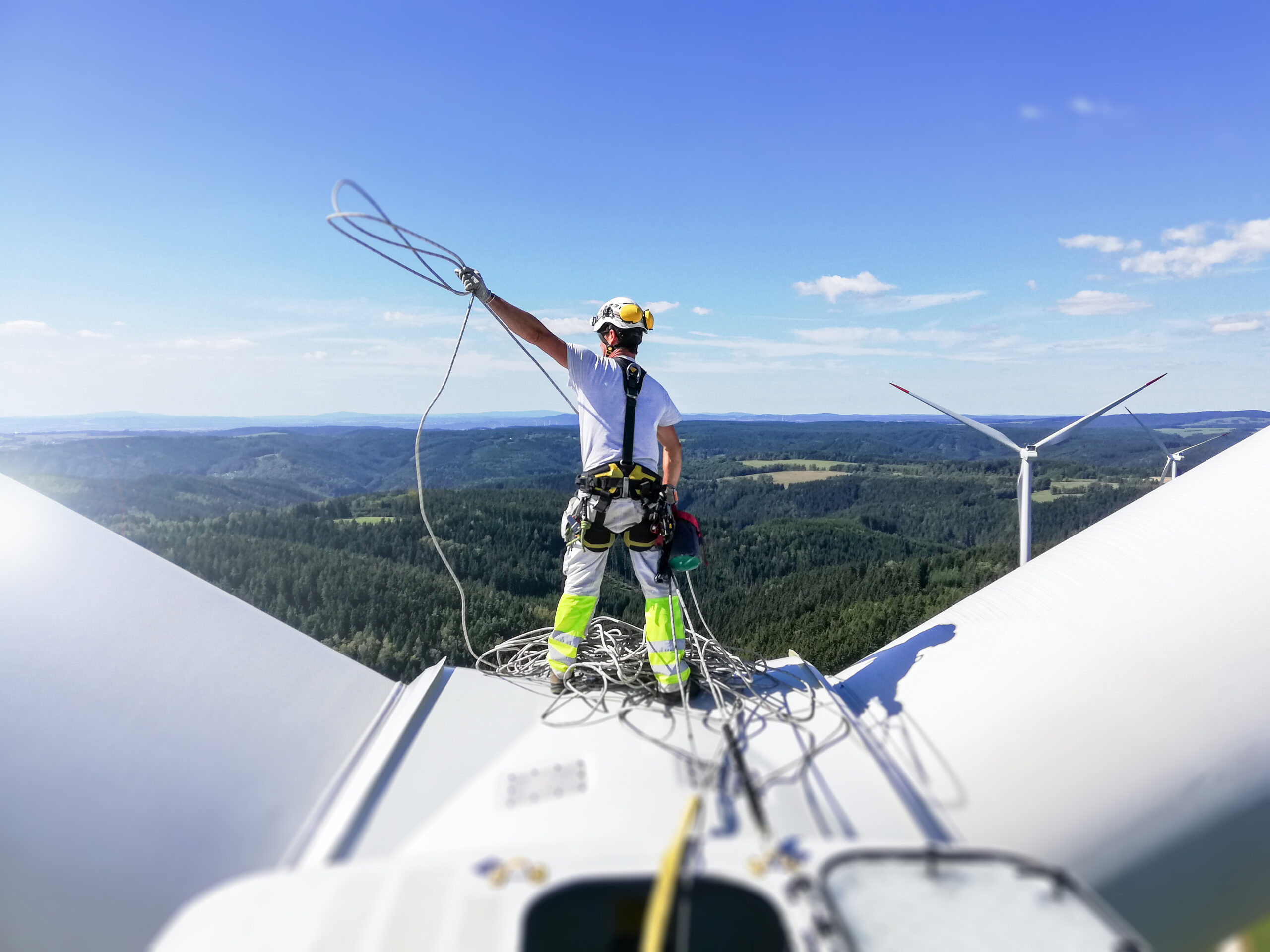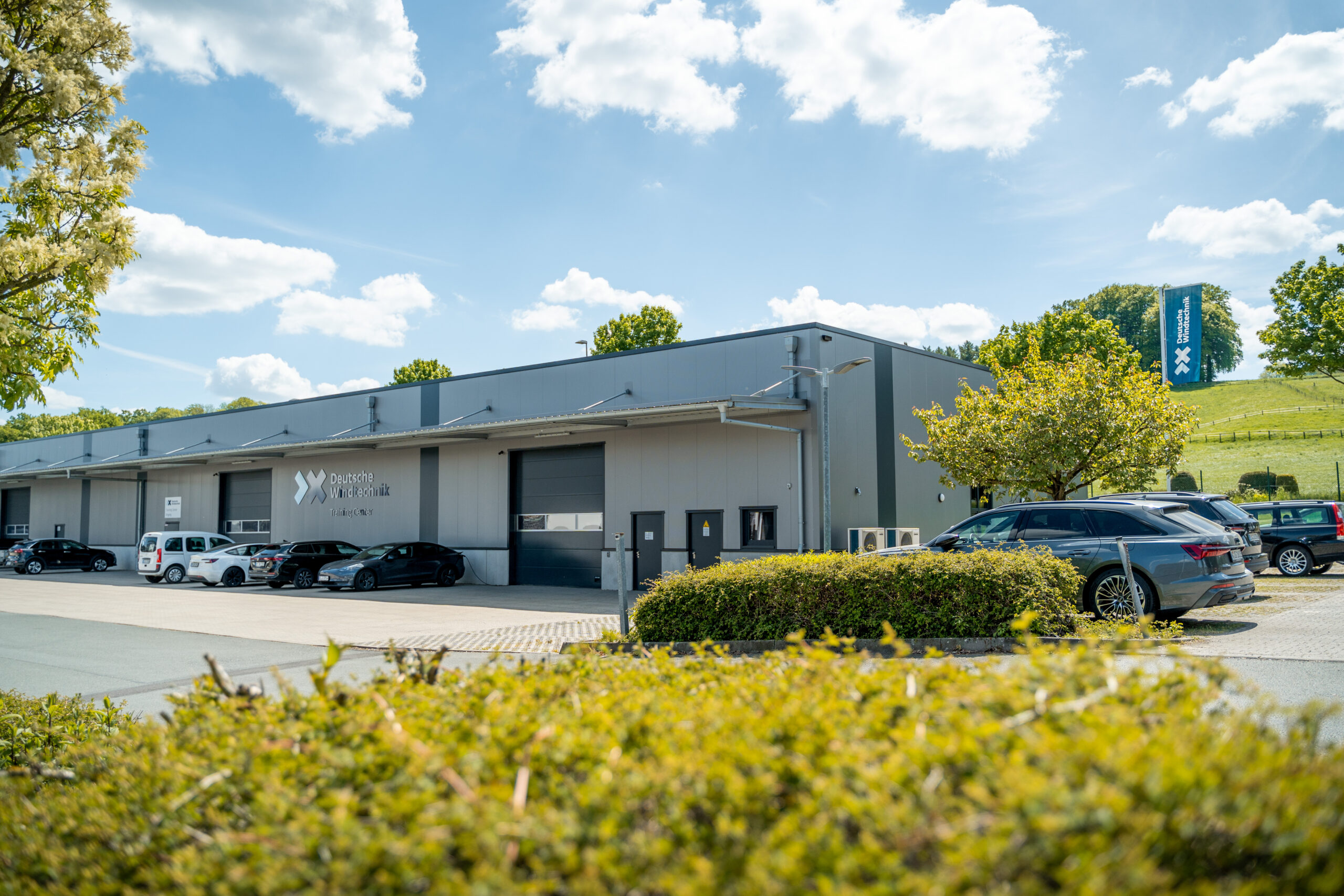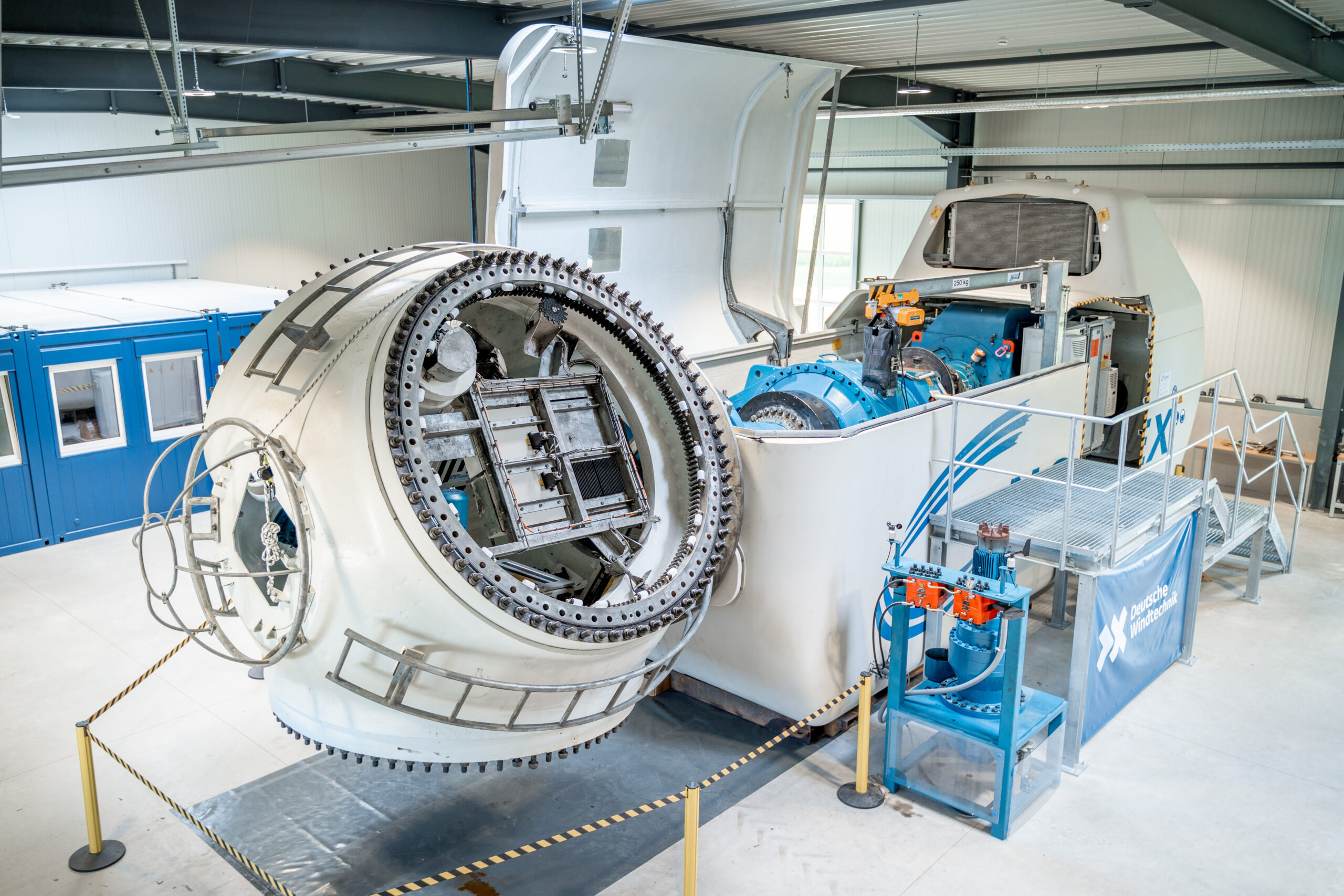
Servicing a wind turbine is not for the faint of heart. Learn how the global service provider, Deutsche Windtechnik equips technicians for the task.
Want to become a wind turbine technician? Here’s what it takes
Working several hundred feet above ground inside the confined space of a wind turbine nacelle is not for the faint of heart. Learn how the global service provider, Deutsche Windtechnik equips technicians for the task.
A few hours’ drive through the plains north of Hamburg, in a modest commercial area outside the small medieval village Fjolde, sits a world-class training center.
Here, Deutsche Windtechnik brings in new recruits as well as experienced technicians from all over Europe to practice everything from basic maintenance to advanced repairs of wind turbines.
In charge of the training center is André Brüske.
“We basically train technicians for any kind of task; on-shore and off-shore and with all kinds of turbines from different brands. We’re one of the largest wind sector’s service companies, thus we handle every kind of service job ,” says Brüske.
Outside the facility, a collection of long, sleek wind turbine rotor blades hints at what’s inside: Two fully equipped nacelles towering on the shop floor.
“You can learn a lot from online tools,” explains Brüske, “but you have to get inside a wind turbine nacelle to really learn what the work is all about.”
So—what is it all about? And what does it take to qualify as a wind service technician?

Qualifying as a technician
According to Brüske, having some technical training or experience is a great starting point. If you’re an electrician, Deutsche Windtechnik could be your next destination.
But one thing is your background, another is having the right mentality.
“Working inside wind turbines is something entirely different than working in a production hall. Of course, you have your colleague with you, and access to tech support hotlines, but you don’t have a boss close by. Basically, you’re up there on your own to get the job done,” says Brüske.
Though it takes the ability to think and act independently, the job is not for the daredevils.
“We’re looking for responsible individuals with a healthy respect for the work. While you shouldn’t be afraid of heights or confined spaces, what truly matters is a safety-conscious mindset. Even a minor accident inside a wind turbine can have serious consequences,” says Brüske.
For this reason, safety is at the very heart of Deutsche Windtechnik’s training program.
“Safety is essential. In a wind turbine, you might have to wait hours and hours for emergency service, and even when they arrive, you’re still not on the ground. Getting someone out of a wind turbine and all the way down is very tricky. Luckily, our accident statistics are really good,” says Brüske.
Becoming a technician
Apart from safety and advanced rescue training, what makes up the training program for a wind turbine technician?
According to Brüske, everyone goes through the same introduction—one week of onboarding, one safety week, and one basic tech week. This ensures all recruits are on the same starting level.
“We usually start out with introducing a new technician to one wind turbine brand. Then he’s competent to do basic maintenance and is sent into the field with an experienced colleague or field trainer. We give them great training here, but they need to do the work in real life, to really learn it” says Brüske.
After several weeks of maintenance practice, it’s back to the training center for the level 2 course; trouble shooting.
From this point on, further training is tailored to each technician’s individual skill set and the specific tasks they will be performing. There is no fixed timeline or one-size-fits-all plan—what matters most is that every technician gains all the knowledge and skills they need to do the job safely and effectively,” says Brüske.

Peeking into the future
As wind turbines are getting bigger and bigger, the training at Deutsche Windtechnik keeps evolving. Still, the fundamentals of wind turbine service remain the same.
“We do a lot to keep pace with the technical development. However, the basics are the same in small and large turbines—you can compare it with auto mechanics: If you know how to service a VW Golf, then you can service a VW Passat,” says Brüske.
As with several other companies today, Deutsche Windtechnik is working to harness the power of A.I.
“I think A.I. solutions will become very valuable for analyzing and pinpointing errors in the entire drive train. It could also play a role in relation to greasing if we can connect it to Hove’s products,” says Brüske. “In the A.I. solutions could save wind farms costly downtime and repairs—and make our technicians’ jobs a bit easier.”
Deutsche Windtechnik and Hove
For over a decade, Hove’s lubrication solutions have played a key role in Deutsche Windtechnik’s operations, enabling technicians and QHSE teams with top of the line tools and knowledge needed for safe and efficient turbine maintenance.
Sign up for the Hove newsletter
Stay up to date with the latest news, cases and insights. We send only relevant and exciting news.